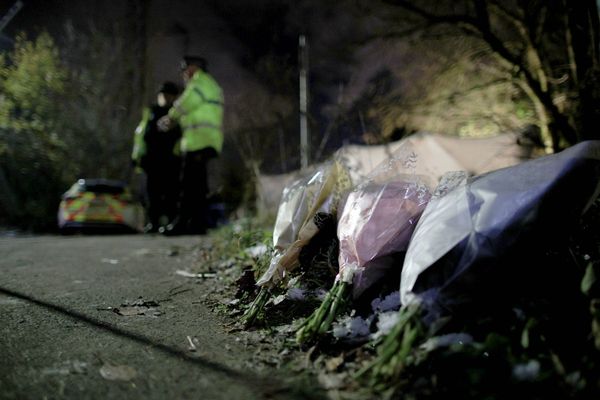
It’s been a difficult February in western Victoria. On February 13, dry lightning sparked a blaze in the Grampians, fanned by high temperatures and 70km northerlies. A bushfire broke out near the dam at Bellfield, which then roared down the forested slopes to engulf the picturesque village of Pomonal. Forty-four homes were lost and five firefighters were injured when their truck was burned over by 30-metre-high flames. Heroic efforts by the CFA saved Pomonal’s school, corner store and historic church, but the small town has been devastated.
Last Thursday was another hot day with strong northerlies. A fire broke out neat the farming hamlet of Warrak. It soon burned into the dense forest of Mount Cole and Mount Buangor, a beautiful area popular with hikers and naturalists. By Thursday afternoon, the fire was threatening Beaufort, a town of 2,000, which was rapidly evacuated. The fire is still going and has burned nearly 20,000 hectares, some of it pristine snow gum forest around the renowned Beeripmo trail.
Like a lot of city slickers, I moved to the country to escape the Melbourne pandemic lockdown, so this was my first experience of a major fire. The experience was cinematic and terrifying.
From her schoolyard, my five-year-old daughter could see the massive plume billowing kilometres in the sky. Her teacher’s house was threatened while her best friend’s farm was evacuated. Thursday’s school pick-up was chaotic, with parents arriving straight from evacuating their properties, animals and key possessions in the back of their utes.
Utilising my journalist’s privilege, I was able to get close to the fireground on Thursday. With the Western Highway closed, it was possible to walk up to the highway overpasses near Buangor. From there, I could see the scale of the conflagration. Smoke wreathed the 1,000m high Mount Buangor, sending a plume of pyrocumulus high into the sky. The fire had burned up and over two mountains, sending embers 10 kilometres east to attack the small town of Beaufort, while dozens of dry lightning strikes started spot fires downwind of the blaze.
Away to my right, flames were visible up on the last hill before Beaufort, as helicopters and cargo planes dropped water. Several CFA trucks roared past, firefighters in the back with their heads buried in maps. I sent a photo to my friend, the environmental writer Tom Doig. “I mean, it’s very beautiful”, he wrote, “in that purely apocalypse-y way”. Welcome to the Anthropocene, I thought.
Premier Jacinta Allen arrived for a media conference on the Thursday after the Pomonal fire, promising all the usual messages of relief and reconstruction. Locals are sceptical. While a bushfire can mean a short-term injection of disaster relief funding, after a couple of months the grants run out and the bureaucrats with clipboards return to Melbourne.
Despite the grumbles, Victoria has learnt from Black Saturday. The warnings are better: the information available from the VicEmergency app is timely and fine-grained.
Resources are better coordinated and incident control appears to have benefited from better planning and training. On Thursday there were more than 1,000 firefighters and 100 trucks deployed in the effort to save Beaufort.
Prime Minster Albanese told reporters on Sunday that “it’s a reminder of the need for us to be vigilant, for us to continue to work and act on the threat that is climate change, with an increased number of extreme weather events and increased intensity of those events”.
But in the longer term, it’s hard to argue that Australia is properly prepared for the ever-growing scale of climate-induced natural disasters. Although federal Emergency Management Minister Murray Watt has made a start on better national preparedness, most of our funding and effort continue to be poured into acute responses like flood rescue and firefighting, rather than longer-term planning for things like drier forests, rising waters and vanishing coastlines. At $1 billion, and disbursing just $200 million a year, current funding for the Commonwealth’s Disaster Ready Fund is inadequate to the task of mitigation.
Policies are one thing, but delivering on the ground is another. The dismal recovery effort in Lismore, where residents are still without homes years after the devastating floods, shows that federal and state government capacity to rebuild shattered communities remains inadequate.
Australia may well be on the brink of a major insurance crisis. As Crikey’s Bernard Keane noted last week, our big insurers are highly concentrated and extremely profitable. But for ordinary consumers, insurance is getting more expensive and harder to obtain. In the wake of repeated natural disasters, insurers can simply leave the marketplace altogether, as we’ve seen in the United States, where insuring a home in riskier areas of Florida or California is becoming impossible. Northern Australia may be heading the same way.
Over the weekend, the writer Jessie Cole penned a poignant essay for Guardian Australia about the constant threat of floods in northern New South Wales. “In northern NSW”, she writes, “flood-PTSD is rife.”
Also on the weekend, the farming hamlet of Willaura held their annual “Farm to Pub” fun run. The aim was to raise money for One Red Tree, the local mental health non-profit. But local fun runs are not going to raise enough money to properly fund mental health services in regional communities, especially as more and more of them are affected by traumatic natural disasters. The regional hospital board is in deficit. There aren’t enough health services, especially for mental health. It can take months to get an appointment with a GP.
Country communities are used to natural disasters, but that doesn’t mean they’re not keenly felt. Even when no lives are lost, homes and farms are destroyed, and livelihoods are affected. It doesn’t take long for conversations at the front bar or the local café to turn to the fear of further fire. Wednesday is going to be hot again: authorities are forecasting another day of “catastrophic” weather.







